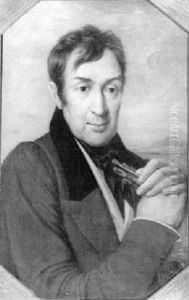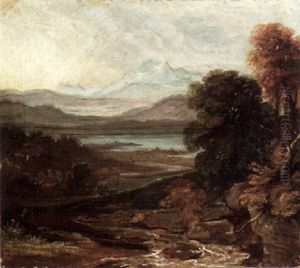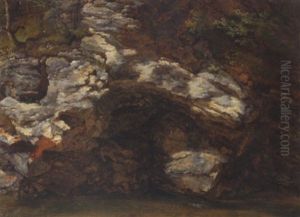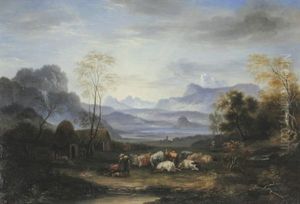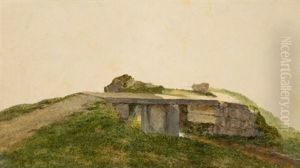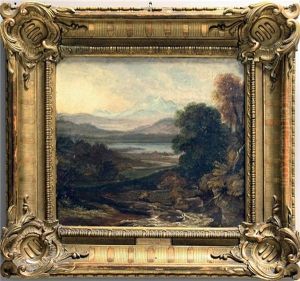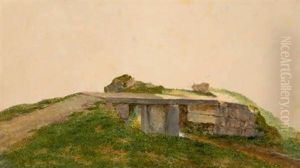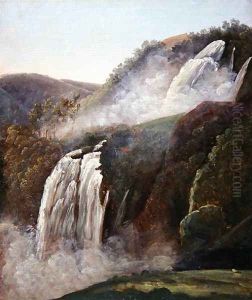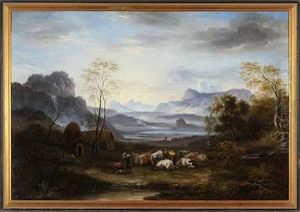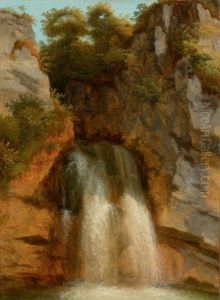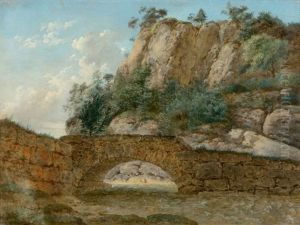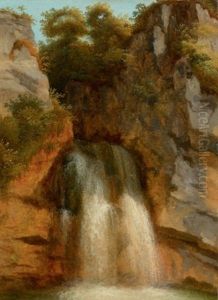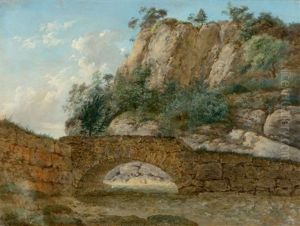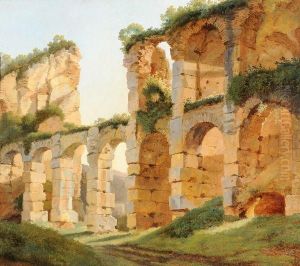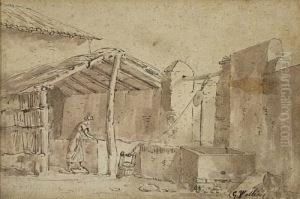George Augustus Wallis Paintings
George Augustus Wallis was an English painter, draughtsman, and engraver born in 1761. His artistic journey began in his homeland, but it was his travels across Europe that significantly shaped his career and style. Wallis is notably recognized for his landscape and architectural works, which not only capture the aesthetic beauty of their subjects but also serve as historical documents of an era.
In the late 18th and early 19th centuries, Wallis ventured across the European continent, drawing inspiration from the diverse landscapes, architecture, and cultures he encountered. This period was marked by a burgeoning interest in romanticism and the picturesque, movements that undoubtedly influenced Wallis's approach to art. He had a particular fascination with Italy, where the rich history, classical ruins, and vibrant cityscapes became frequent subjects of his works. His Italian scenes were especially celebrated for their detailed accuracy and ability to evoke the essence of the locations he depicted.
Throughout his career, George Augustus Wallis exhibited a profound mastery over various mediums. Although he initially garnered attention for his engravings, it was his watercolors and oil paintings that truly showcased his versatility and skill. Wallis's engravings were highly valued for their precision and clarity, making them sought after by collectors and fellow artists alike. His works were exhibited at prestigious institutions, including the Royal Academy in London, where they received considerable acclaim.
Despite his contributions to the art world and the notable quality of his work, George Augustus Wallis remains a somewhat overlooked figure in the pantheon of British artists. His dedication to capturing the beauty and intricacy of European landscapes and architecture, however, continues to be appreciated by art historians and collectors. Wallis's art not only offers a glimpse into the aesthetic sensibilities of his time but also provides valuable insights into the historical and cultural contexts of the locations he portrayed.
George Augustus Wallis passed away in 1847, leaving behind a legacy characterized by a deep commitment to the art of landscape and architectural representation. His works, which now reside in various collections and museums, continue to be studied and admired for their beauty, technical skill, and historical significance. Through his detailed and evocative paintings and engravings, Wallis has ensured that the landscapes and landmarks he so cherished will be remembered for generations to come.



